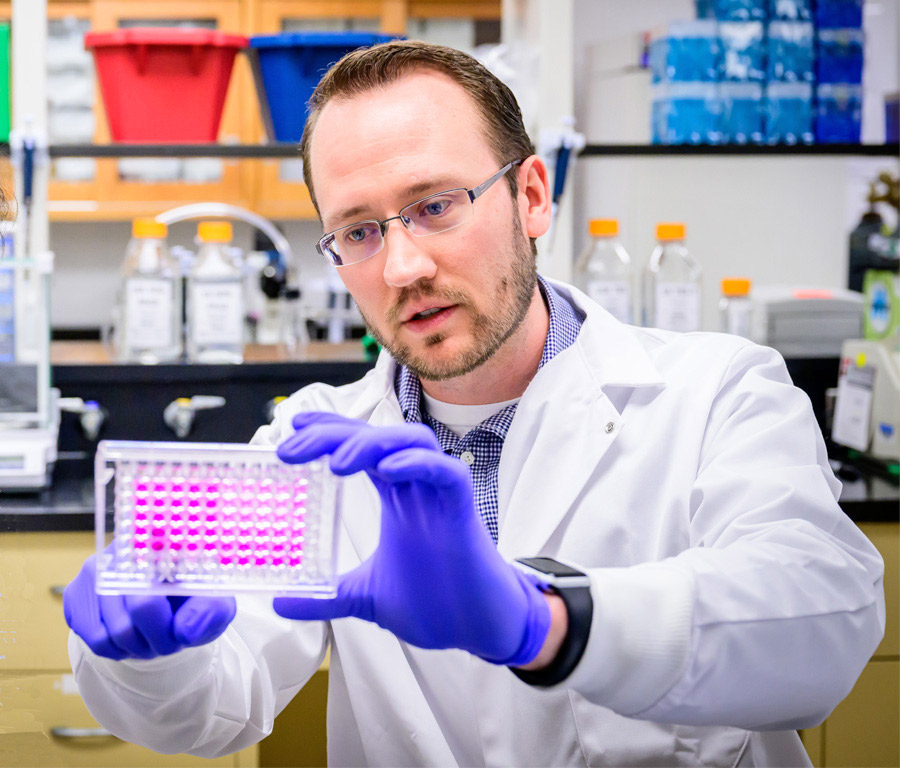I Plan to Present and Publish My Data
Last fall at the American Association of Zoo Veterinarians conference, I had the pleasure of meeting Dr. Gregory Lewbart of North Carolina State University, who offered to provide support for a summer research project for me. After reviewing current literature in the field, I generated the idea of establishing baseline blood work for clownfish.
![[clownfish]](https://vetmed.illinois.edu/wp-content/uploads/2021/04/clownfish-300x215.jpg)
Many Months to Design Clownfish Project
Dr. Lewbart connected me with Dr. Roy Yanong of the University of Florida Tropical Aquaculture Laboratory and Dr. Nicole Stacy of the University of Florida College of Veterinary Medicine. A few weeks later, I developed a proposal for the project and sent it to my co-authors for review. After the proposal was finalized, my co-authors helped me get in touch with fish farms for the data collection portion of the project.
The next few months, I began developing the protocol. My co-authors and I had a conference call to review the final details of the project before the data collection began.
![[Sarah Wright monitors water quality]](https://vetmed.illinois.edu/wp-content/uploads/2021/04/sb-wright-clownfish-water-quality.jpg)
Two Days of Clownfish Data Collection
Reilee and I took inventory of the supplies and organized everything for day one of data collection. The next day we began data collection. (The photo at the top of the page shows me on the right, with Reilee.) We took thorough and frequent water quality measurements before and during the data collection. We anesthetized the fish using buffered tricaine methanesulfonate before collecting data. Our data collection set-up involved three stations: Physical examination and morphometric data, venipuncture, and diagnostics.
Dr. Yanong performed the physical exams, I performed the venipuncture, and Reilee performed the diagnostics (chemistries, lactate, packed cell volume, and total solids). Ultimately, we collected 25 tomato clownfish from day one. We used the same set up at a different farm the next day and collected data from 38 saddleback clownfish. After performing venipuncture, I made blood films for each fish. I then sent these films to Dr. Nicole Stacy for complete blood count data.
![[Day Two of Sarah Wright's research collection]](https://vetmed.illinois.edu/wp-content/uploads/2021/04/sb-wright-clownfish-day-2-300x225.jpg)
Grateful to Collaborators
The project truly was a multi-institutional collaborative effort. In addition to my co-authors, I would like to thank Mr. Kent Passingham of North Carolina State University College of Veterinary Medicine, Denver Coleman of the University of California, Davis, School of Veterinary Medicine, Eric Wagner of Proaquatix, and Adam Heinrich of Oceans, Reefs, & Aquariums.
I would also like to thank the Robert J. Koller Endowment for Aquatic Animal Medicine and the International Association for Aquatic Animal Medicine Medway Scholarship Endowment for financial support of this project, and Dr. Michael O’Connor of Holy Family Veterinary Hospital for technical assistance.
This project gave me practical experience with water quality, fish anesthesia, and fish venipuncture, and it allowed me to further develop my communication, organization, and scientific writing skills.
By Sarah Wright, third-year veterinary student

![[Reilee Juhl and Sarah Wright]](https://vetmed.illinois.edu/wp-content/uploads/2021/04/sb-wright-clownfish-juhl.jpg)


